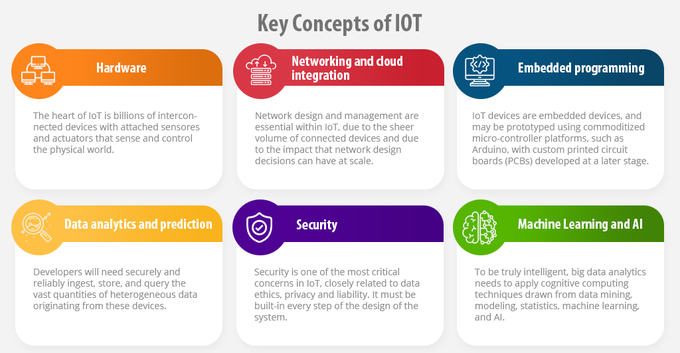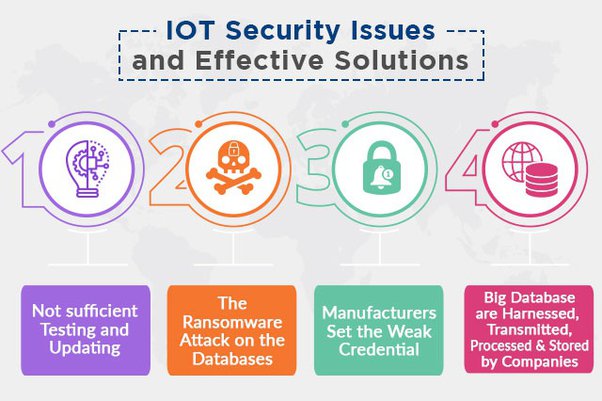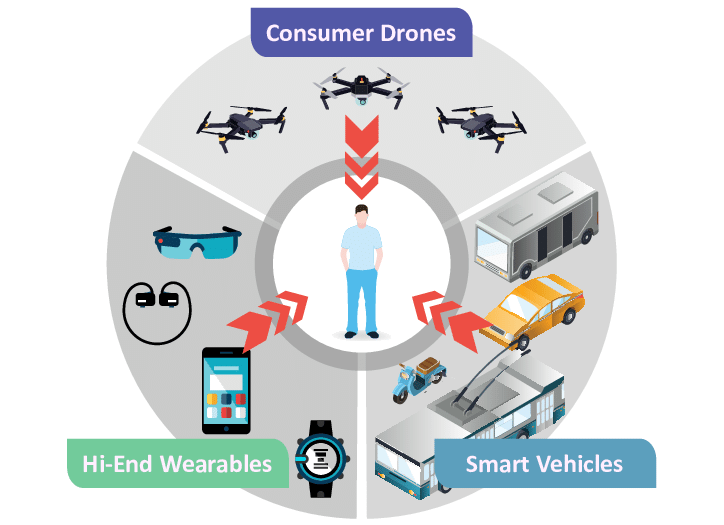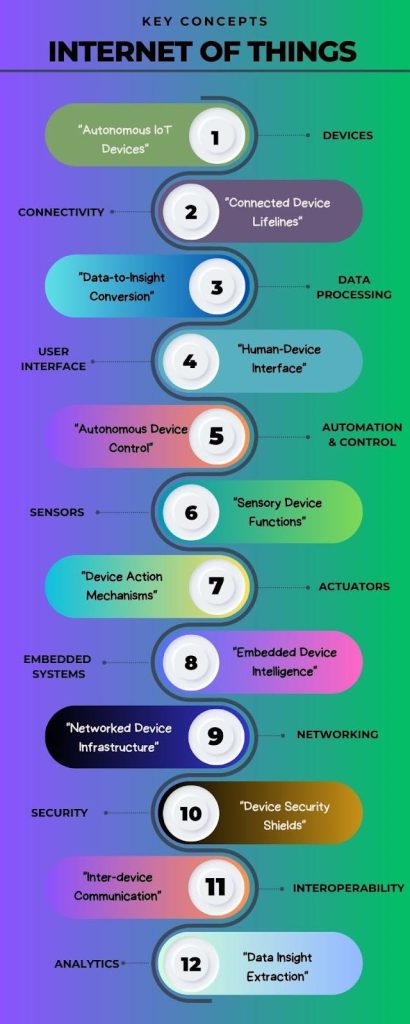What is Internet Of Things(IOT)?
IoT stands for Internet of Things, and it refers to the network of physical objects or “things” that are embedded with sensors, software, and other technologies to connect and exchange data with other systems or devices over the internet. These connected devices can range from simple household items like thermostats and smart lights to more complex industrial machines and sensors. Here’s an overview of IoT:

Knowledge about IOT



IoT is important for business for several reasons. Here are the core benefits of IoT:
Improved efficiency:- By using IoT devices to automate and optimize processes, businesses can improve efficiency and productivity. For example, IoT sensors can be used to monitor equipment performance and detect or even resolve potential issues before they cause downtime, reducing maintenance costs and improving uptime.
Data-driven decision-making:- IoT devices generate vast amounts of data that can be used to make better-informed business decisions and new business models. By analyzing this data, businesses can gain insights into customer behavior, market trends and operational performance, allowing them to make more informed decisions about strategy, product development and resource allocation.
Cost-savings:- By reducing manual processes and automating repetitive tasks, IoT can help businesses reduce costs and improve profitability. For example, IoT devices can be used to monitor energy usage and optimize consumption, reducing energy costs and improving sustainability.
Enhanced customer experience:- By using IoT technology to gather data about customer behavior, businesses can create more personalized and engaging experiences for their customers. For example, retailers can use IoT sensors to track customer movements in stores and deliver personalized offers based on their behavior.
Improved efficiency:- By using IoT devices to automate and optimize processes, businesses can improve efficiency and productivity. For example, IoT sensors can be used to monitor equipment performance and detect or even resolve potential issues before they cause downtime, reducing maintenance costs and improving uptime.
Data-driven decision-making:- IoT devices generate vast amounts of data that can be used to make better-informed business decisions and new business models. By analyzing this data, businesses can gain insights into customer behavior, market trends and operational performance, allowing them to make more informed decisions about strategy, product development and resource allocation.
Cost-savings:- By reducing manual processes and automating repetitive tasks, IoT can help businesses reduce costs and improve profitability. For example, IoT devices can be used to monitor energy usage and optimize consumption, reducing energy costs and improving sustainability.
Enhanced customer experience:- By using IoT technology to gather data about customer behavior, businesses can create more personalized and engaging experiences for their customers. For example, retailers can use IoT sensors to track customer movements in stores and deliver personalized offers based on their behavior.

IOT Modules
- • Module 1 – Introduction To IOT
- • Module 2 – IoT Architecture
- • Module 3 – Sensors and Actuators
- • Module 4 – Communication in IoT
- • Module 5 – IoT Protocols
- • Module 6 – IoT Data Management
- • Module 7 – IoT Device Development
- • Module 8 -- IoT Security and Privacy
- • Module 9 – IoT Standards and Protocols
- • Module 10 – IoT Project Development
- • Module 11 – IoT Trends and Future Developments
- • Module 12 – IoT Capstone Project
- • Module 13 – IoT Standards and Regulations
- • Module 14 – IoT Applications
- • Module 15 – IoT Development Platforms

